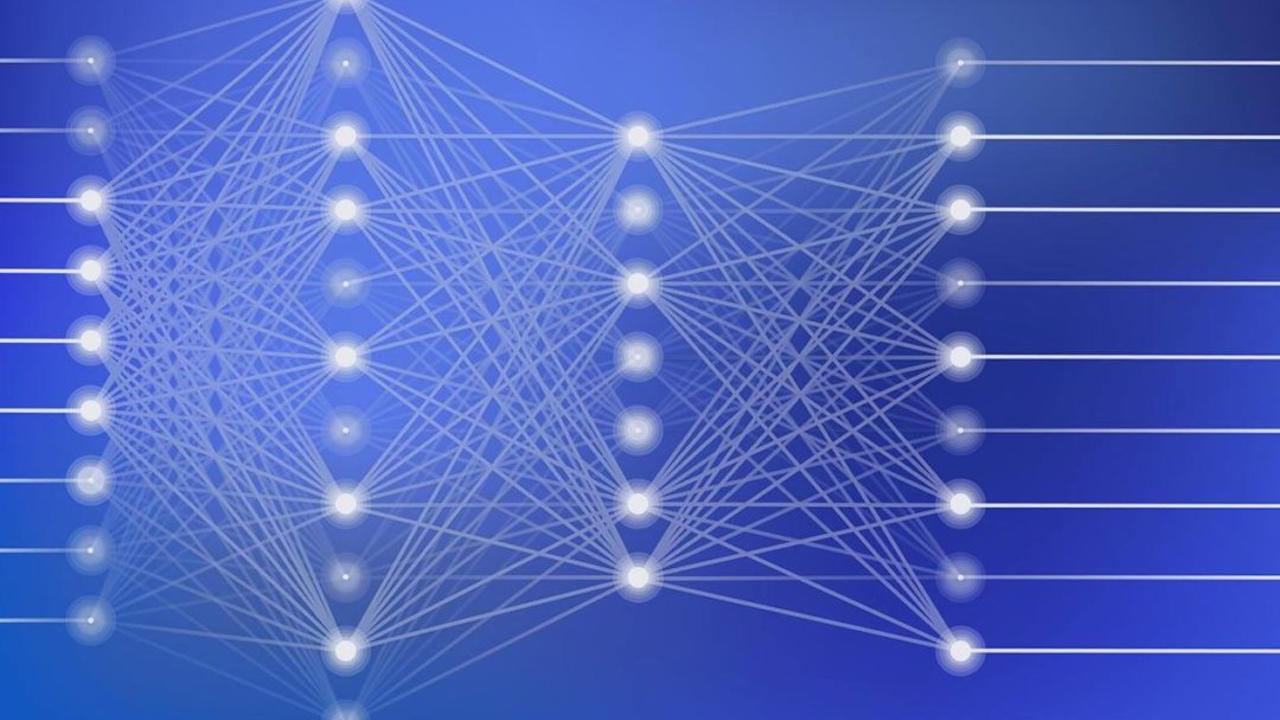Science News
& Faculty Articles
Graphene Proves That Brownian Motion Can Be A Source of Energy!

By Dr. Inés Urdaneta / Physicist at Resonance Science Foundation
Graphene, one of the most important nanomaterials developed so far, continues to surprise the scientific community. This time, thanks to the extraordinary phenomena found by a group of physicists from the University of Arkansas. We are talking specifically about the capacity to use the thermal motion of atoms in graphene as a source of energy!
In this recent work, published in Physical Review E under the title Fluctuation-induced current from freestanding graphene, the team of researchers have successfully developed a circuit capable of capturing graphene's thermal motion and converting it into an electrical current.
As it is said in this article: "The idea of harvesting energy from graphene is controversial because it refutes physicist Richard Feynman's well-known assertion that the thermal motion of atoms, known as Brownian motion, cannot do work. Thibado's team found that at room...
The Big Bang: A Big Bounce?

By Dr. Inés Urdaneta / Physicist at Resonance Science Foundation
The most spread worldview on the origin of our Universe, is that of the big explosion, commonly known as the Big Bang (BB). We have asked ourselves what happens right after, at the first instants of the universe… the most accepted view among cosmologists is that of an exponential expansion, called the inflation theory.
The BB theory results from doing a backward-in-time evolution to the universes' expansion. If it is expanding as time moves forward, this implies the universe was smaller, denser and hotter in the distant past. The BB theory predicts that the early universe was much denser and extremely hot, about 273 million degrees above absolute zero, too hot for atoms to exist, only free electrons and hydrogen nuclei – protons and neutrons- where present. After cooling during the expansion, these nuclei and electrons combined to compose the first light atom, the Hydrogen (H). It is now known...
2020 Physics Nobel Prize to Black Holes!

By Dr. Inés Urdaneta / Physicist at Resonance Science Foundation
Recently awarded the Nobel prize for the discovery that black hole formation is a robust prediction of the general theory of relativity, Sir Roger Penrose had earlier developed a theory known as “conformal cyclic cosmology“ (CCC) which posits that the universe iterates through infinite cycles, from one aeon to the next, such that the universe became uniform before rather than after the Big Bang. Each cycle starts out from a singularity before expanding and generating clumps of matter, which eventually gets sucked up by supermassive black holes, which over the very long term disappear by continuously emitting Hawking radiation. This process restores uniformity and sets the stage for the next Big Bang. In CCC, the future time-like infinity of each previous iteration being identified with the Big Bang singularity of the next. Penrose popularized this theory in his 2010 book Cycles of Time: An...
Is the Physical World a Neural Network?

By Dr. Inés Urdaneta / Physicist at Resonance Science Foundation
In a former RSF article entitled Between the Generalized Holographic approach and Data Science, we addressed the potential of trained artificial neural networks to replace our scientific models, and the possibility of reality being a numerical simulation was discussed. Somehow we had anticipated this next and very recent work from Vitaly Vanchurin, from the University of Minnesota Duluth, proposing that we live in a neural network. It is an audacious idea!
In our prior article we had anticipated the impact of artificial neural networks and deep machine learning … what we had not foreseen was that they would be used literally as the framework for the theory of everything! There is a saying: "better be a historian, than a prophet", meaning that a historian writes about past events, and so taking small risk, while a prophet takes a huge risk with his predictions. Though, we should not brag about this feat...
Blue And Green Colors Of Nature Are More Intense … Why?

By Dr. Inés Urdaneta / Physicist at Resonance Science Foundation
Image: Evan Leeson/Bob Peterson/lowjumpingfrog. None of these animals contain a single trace of blue pigment.
Colors in nature come mainly from three sources: pigments, structural colors, and bioluminescence.
Have you noticed that some colors are more intense than others in nature?
Such is the case of blue and green colors, compared to reds and the rest. The main reason is that blue and green can be structural colors, while the remaining colors seem to not be part of the team.
Structural coloring is the result of microscopically fine structured surfaces that interfere with visible light, sometimes in combination with pigments. For example, peacock tail feathers are brown pigmented, but because of their microscopic structure, they also reflect blue, turquoise and green light. And they are often iridescent. Thus, structural coloring is a classic optical effect of interference and diffraction, rather than a quantum...
Beyond Science Fiction! Extracting Energy from Black Holes

Image Credit: NASA/JPL-Caltech
By Dr. Inés Urdaneta, Resonance Science Foundation Research Scientist
In 1969, Roger Penrose proposed a method to extract rotational energy of a rotating black hole, and suggested that an advanced civilization could achieve it by lowering and then releasing a mass from a structure that is co-rotating with the black hole. The process would occur in the region just outside the event horizon, called the ergosphere, where frame-dragging is at its strongest, being able to tear apart an object; one part would enter the event horizon while the remaining one would be accelerated outwards with an additional impulse given by the rotational energy of the black hole. The excess energy calculated by Penrose was estimated to be 21 percent more than the incoming energy.
The process is brilliantly explained in this video:
Inspired by Penrose’s idea, Yakov Zel’dovich predicted in 1971 that quantum fluctuations and classical electromagnetic...
Does Spacetime Emerge From Entanglement?

By Dr. Inés Urdaneta / Physicist at Resonance Science Foundation
The question above could be preceded with the following one: Is space an illusion?
Since the magnitude of a force like electromagnetic and gravity between two objects is inversely proportional to the distance between them, it seems plausible to conclude objects only interact with other objects when they are close, and the closer they are, the stronger the interaction. For instance, when bringing two magnets towards each other, one can feel the increase in the rejection between them (if approached by the same pole) or attraction between them (if opposite polarity). And since the force can be felt when the objects are still not in contact, one could say that the force is mediated by a field. Fields spread out as they propagate outside of the object.
This dependence of forces and interactions upon distance is the main characteristic of the principle of locality. Locations and speeds of objects are...
Quantum Computing via Electroluminescence

By Dr. Amira Val Baker, Resonance Science Foundation Astrophysicist
The first steps to achieving efficient electroluminescence necessary for quantum computing have just been made.
Quantum computers encode information in quantum bits otherwise known as qubits. These qubits can exist in the form of a photon or an electron, where the polarisation state of the photon or the spin state of the electron is taken as two bits of information. However, as opposed to classical bits, qubits can also exist in a superposition of states which allows the computer to process significantly more information and at a faster rate. This rate is limited by the transfer of information, which for an electron-spin qubit has so far proven difficult. Currently this has been achieved for distances up to millimetre scales, which although large from the qubit’s perspective, it is too small for practical applications.
To achieve the long-distance kilometre-scale transfer of quantum information encoded as...
Fractal Pattern in a Quantum Material Confirmed for the First Time!

Image by: Arkadiusz Jadczyk
By Dr. Inés Urdaneta / Physicist at Resonance Science Foundation
The word fractal has become increasingly popular, although the concept started more than two centuries ago in the 17th century with prominent and prolific mathematician and philosopher Gottfried Wilhelm Leibnitz. Leibnitz is believed to have addressed for the first time the notion of recursive self-similarity, and it wasn’t until 1960 that the concept was formally stabilized both theoretically and practically, through the mathematical development and computerized visualizations by Benoit Mandelbrot, who settled on the name “fractal”.
Fractals are defined mainly by three characteristics:
- Self-similarity: identical or very similar shapes and forms at all scales.
- Iteration: a recursive relationship limited only by computer capacity. With sufficiently high performance, the iterations could be infinite. This allows for very detailed shapes at every scale, that modify...
Artificial Intelligence Meets Quantum Physics

By Dr. Inés Urdaneta / Physicist at Resonance Science Foundation
As many theoretical and computational chemists and physicists know, quantum chemical calculations involving more than an electron and nuclei are very difficult to solve. They belong to a field called many body problems and require an extensive amount of computational infrastructure and hours of calculations depending on the size (the number of particles) of the system.
Here is where artificial intelligence – a combination of artificial neural networks and machine learning – comes into play. Neural networks have been around for more than 50 years, and they are more actualized than ever before. This is because they can learn through something called backward propagation, reaching a high level of predictability and increasing accuracy by training the network.
Quantum theoretical models, together with their computational packages, have been outstandingly successful in describing the quantum regime. While...



